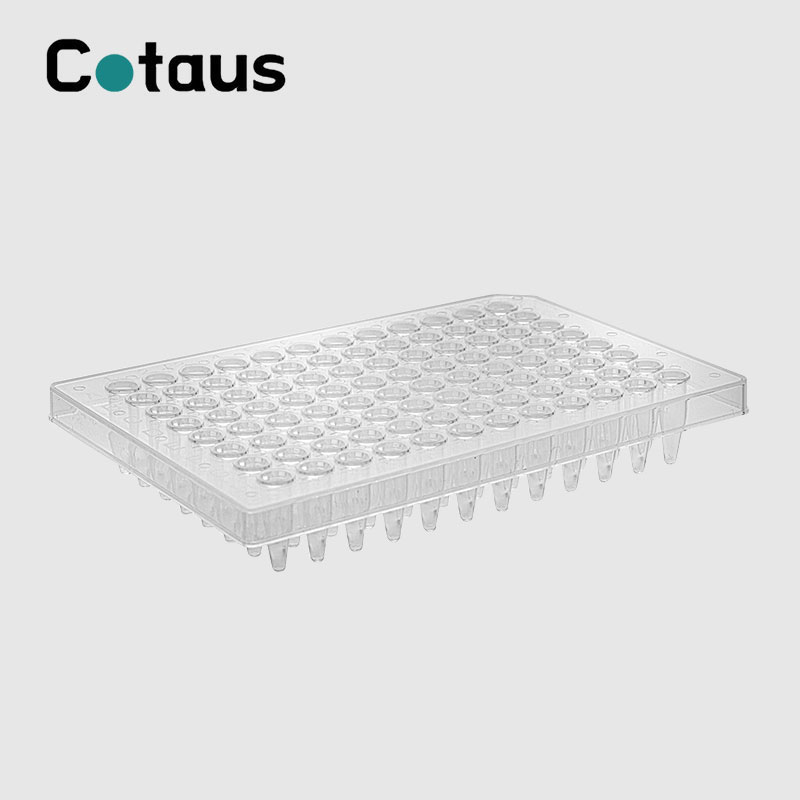Unveiling the Distinctive Design of Transparent Half-Skirt PCR Plates
2024-03-22
In the ever-evolving landscape of molecular biology research, even the smallest innovations can make a profound impact on experimental outcomes. One such innovation that has revolutionized PCR (Polymerase Chain Reaction) workflows is the transparent half-skirt PCR plate. These plates represent a departure from traditional PCR plate designs, offering researchers enhanced functionality and convenience. In this blog, we'll explore how the design of transparent half-skirt PCR plates differs from traditional PCR plates and the benefits these differences confer to scientific research.
Traditional PCR Plates: A Foundation of Functionality
Traditional PCR plates, often referred to as full-skirt PCR plates, have been a staple in laboratories for decades. These plates typically feature a solid, opaque skirt that extends fully around the perimeter of the plate. While effective for containing samples and facilitating efficient heat transfer during PCR cycling, traditional PCR plates have certain limitations, particularly concerning sample visibility and accessibility.
Enter Transparent Half-Skirt PCR Plates: A New Standard of Versatility
Transparent half-skirt PCR plates represent a departure from the traditional full-skirt design, offering researchers a host of advantages. The most notable difference lies in the skirt design; instead of a solid, opaque skirt, transparent half-skirt PCR plates feature a transparent skirt that extends halfway down the height of the plate. This innovative design choice opens up a world of possibilities for researchers:
Enhanced Sample Visibility: The transparent half-skirt design provides researchers with unobstructed visibility of sample wells, enabling easy monitoring of sample levels, reaction mixtures, and pipetting accuracy. This enhanced visibility minimizes the risk of errors and allows for real-time observation of PCR reactions.
Improved Accessibility: The half-skirt design offers greater accessibility to sample wells, making it easier for researchers to pipette samples into the plate without interference from the skirt. This feature is particularly advantageous when working with automated liquid handling systems or when conducting high-throughput experiments, where efficiency and precision are paramount.
Compatibility with Sealing Films: Transparent half-skirt PCR plates are designed to accommodate a variety of sealing films, ensuring a secure seal to prevent sample evaporation and contamination during PCR cycling. The reduced skirt height minimizes interference with sealing films, allowing for reliable and consistent sealing across all wells.
Optimized Thermal Cycling Performance: Despite the reduced skirt height, transparent half-skirt PCR plates maintain excellent thermal conductivity, ensuring efficient heat transfer during PCR cycling. This optimization promotes uniform amplification of target DNA across all wells, resulting in reproducible and reliable PCR results.
Conclusion: Embracing Innovation for Enhanced PCR Workflows
In the dynamic world of molecular biology research, innovation drives progress. Transparent half-skirt PCR plates represent a significant advancement in PCR plate design, offering researchers enhanced sample visibility, accessibility, and thermal performance compared to traditional PCR plates. By embracing these innovative design features, researchers can streamline their PCR workflows, improve experimental outcomes, and accelerate scientific discovery. Transparent half-skirt PCR plates have become an indispensable tool in the molecular biology toolkit, empowering researchers to push the boundaries of knowledge and unlock new insights into the complexities of the biological world.



